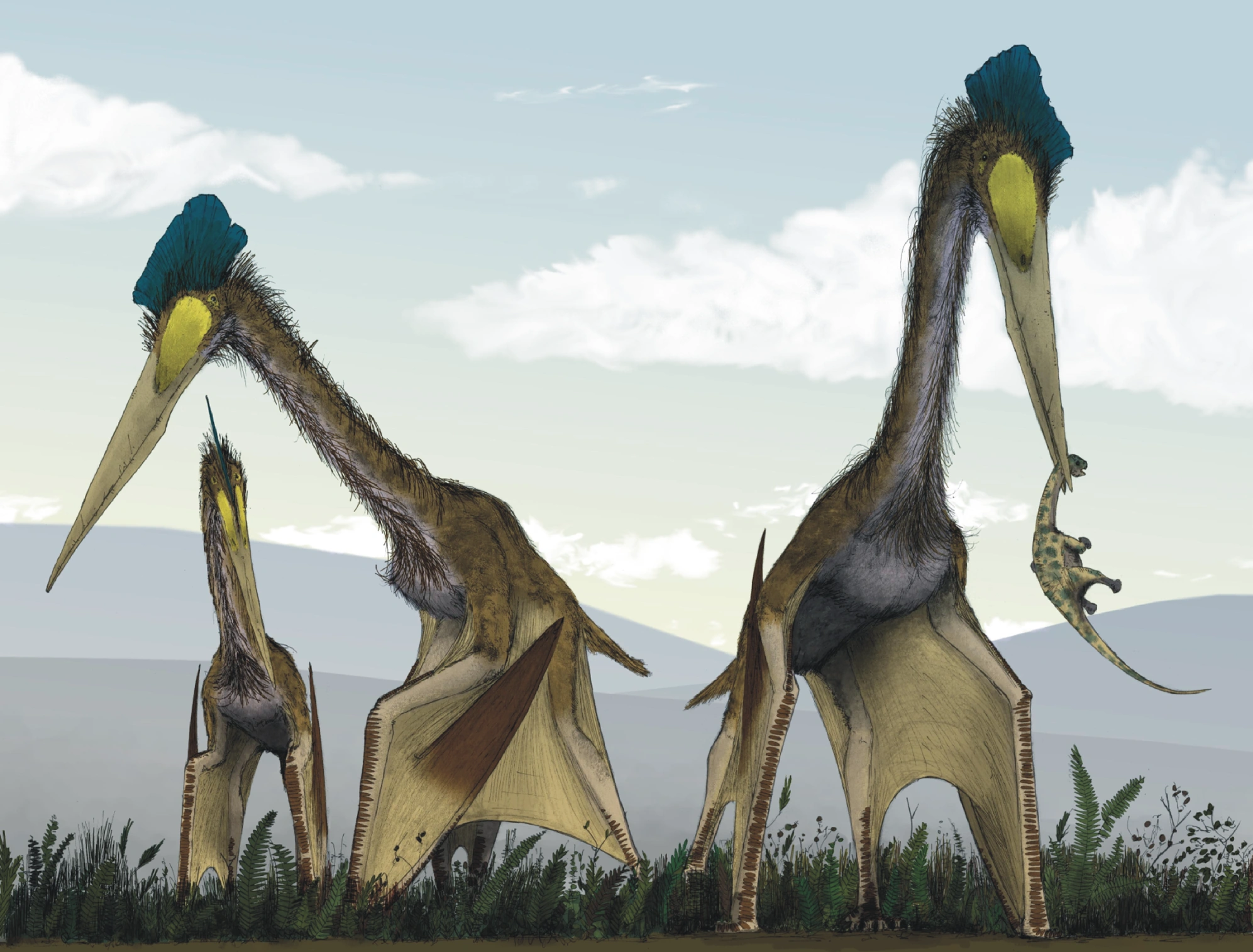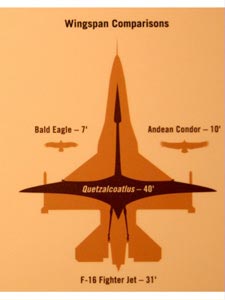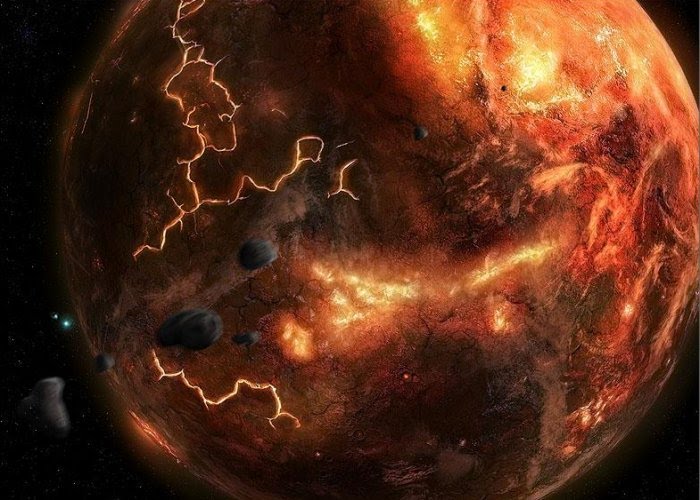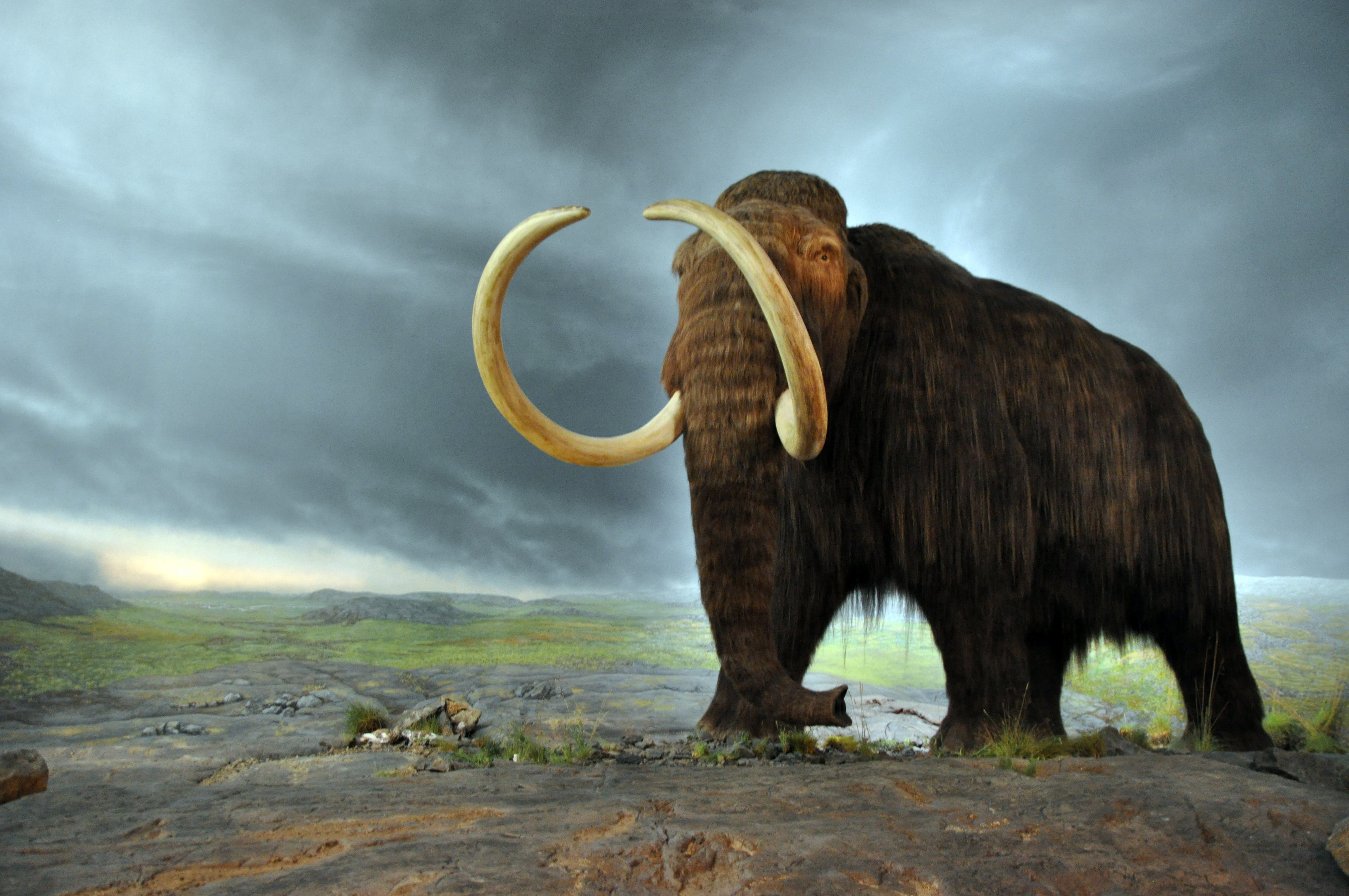From the time of the dinosaurs comes
the largest pterasaur of all: Quetzalcoatlus. The name sounds like Quetzalcoatl,
the feathered god from Mesoamerica, and there's a reason for that.
This animal was enormous, and was the largest flying animal to have ever lived. It had the
largest wingspan of any pterasaur in history, and that naturally puts it far
above any bird alive today. Wingspans from observed fossils range between 40 and 50 feet. For reference,
bald eagles have a wingspan of about 8 feet, and the largest bird living today,
the wandering albatross, has a wingspan of about 11 feet. Quetzalcoatlus was
around the size of an F-16 jet.
For all that size, though, little is
known about how it lived, or even if it could fly. Something that large would
have a hard time getting off the ground, and since it roamed the planet around
the time of the cretaceous, there’s little evidence to be gleaned about its
actual behaviors. It may have had to run to achieve liftoff, much like a jet taxiing down a runway.
It's also debatable how it hunted. Some researchers think it was a
terrestrial scavenger, feeding off dead animals. Others think it had fast,
agile flight, and would skim fish from the seas with its enormous beak. Others
think it was a slow flyer, relying on air currents to get airborne, and would glide as high as 15000 feet over vast
distances, much like an extreme version of albatrosses today.
In the Sixth Event, the characters have
a run-in with a group of Quetzalcoatlus, and they observed these animals using
a very unique hunting pattern! It’s quite fun to look at research and imagine
how such a creature may have hunted and fed.
So if this animal was so powerful, what
made them go extinct? The same thing that made all of the dinosaurs go extinct—the
meteor impact event at the end of the cretaceous. But bones from these pterosaurs
can still be found, and as we discover more, we can infer more about how they
lived and what the time of the dinosaurs may have been like.





